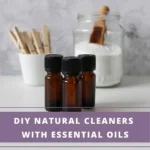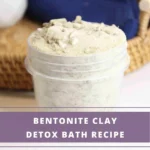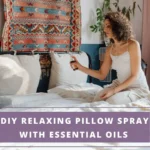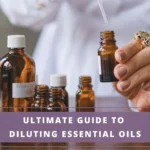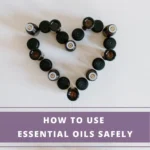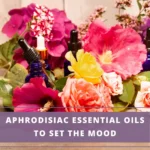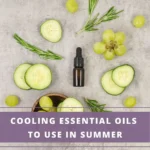As an Amazon Associate I earn from qualifying purchases. See Full Disclosure Here
A diffuser is a type of device that disperses essential oils into the air, providing a therapeutic and aromatic experience. There are 4 main types of diffusers for essential oils, based on their mechanism.
Each of these types of essential oil diffusers has its own distinctive features and benefits. Each also has its own set of pros and cons.
Some work better than others but are much more expensive. Others may be more pocket-friendly but less effective at dispersing essential oils.
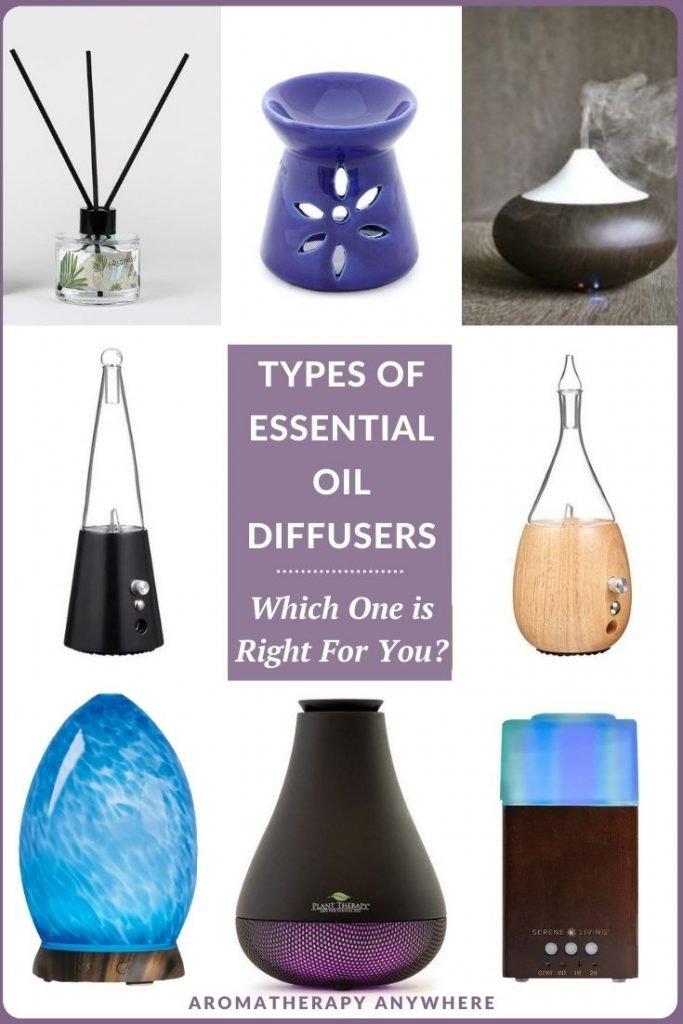
For beginners to aromatherapy, the biggest challenge can be choosing from among so many different types of diffusers for essential oils.
Should you should an inexpensive one with basic features or pay more for one with more complex features?
Understanding a bit more about the different types of diffusers and how each one works will help you make a more informed buying decision when looking for the best device for you.
4 Types of Essential Oil Diffusers Based On Mechanism
1. Nebulizing Diffusers
Essential oil nebulizers are among the most powerful types of diffusers.
They use a jet of air to break essential oils into tiny particles and disperse them into the air without the use of water.
These devices do not use heat or water, making them very efficient at preserving the aroma and therapeutic properties of essential oils.
The absence of any plastic components also helps to preserve the integrity of the oils.
Many essential oil nebulizers come with inbuilt timers and other features so you can personalize your aromatherapy experience.
Pros & Cons of Nebulizing Diffusers
Pros:
– Disperse essential oils into the air in their purest form without altering their chemical composition, providing the full therapeutic benefits of essential oils
– Provide a strong and intense aroma of your favorite essential oils and blends
Cons:
– Are the most expensive of all types of diffusers for essential oils
– Because oils are used in their concentrated form without water, they get used up faster
Upshot
While essential oil nebulizers are the most expensive type of diffuser, they are totally worth it considering you get the strongest aroma and the full therapeutic benefits of the oils used.
2. Ultrasonic Diffusers
Ultrasonic diffusers are one of the most widely-used types of essential oil diffusers.
They use high-frequency vibrations to break down the water and essential oil molecules, creating a fine mist made up of the oil’s micro-components mixed with water.
The mist and micro-particles are easily dispersed into the atmosphere, activating the powerful therapeutic benefits of essential oils.
The vibrations create a mist by breaking down the water and oil molecules into small particles that can be easily dispersed into the air.
Ultrasonic units do double duty as mini humidifiers and are especially beneficial in winter. The fine mist that is released introduces small amounts of water into the air, adding humidity to dry winter air. The amount of mist generated differs from one model to another.
These devices often come with LED lights that can be used for ambiance or to help create a relaxing atmosphere.
This type of diffuser is generally more affordable than nebulizing diffusers and is quieter. However, they require water to operate, which means that they need to be cleaned regularly to prevent the buildup of bacteria.
Pros & Cons of Ultrasonic Diffusers
Pros
– Because no heat is used, the properties of the essential oil remain intact so you get its full therapeutic benefits
– Add moisture into the air, providing a humidifying effect, which can be useful when the weather is very dry
– A wide array of models to choose from, at different price points
– Come packed with lots of useful features, from rotating LED lights and automatic shut-off to controls that allow you to adjust the aroma and mist settings, and more
Cons
– Because water is used, the aroma is slightly diluted
– The mist generated with the smaller models may not be enough to humidify a large room
Upshot
Ultrasound diffusers are feature-rich, easy to use, and offer the best value for money. They combine form and function and are the most popular option for home use.
Passive Diffusers
Passive diffusers may contain a filter or absorbent pad that holds the essential oil. The oil releases its aroma as it evaporates naturally.
This type of diffuser is more affordable than nebulizing or ultrasonic devices, but it has a limited range and doesn’t cover larger areas.
There are a few different types of passive diffusers for essential oils.
The most common type of passive diffuser is a flower-shaped device that’s made from an absorbent material such as sandstone, terracotta, or ceramic. The diffuser absorbs the essential oil and scents up the space as the aroma evaporates.
Essential oil jewelry offers a practical way to get the benefits of aromatherapy anytime, anywhere. Every aromatherapy pendant or necklace has a small felt pad that holds the essential oil and disperses it slowly into the air.
Reed diffusers are another type of passive diffuser. They work by using reeds to draw the diluted oils from the container and expose them to the air. The exposed essential oil evaporates on exposure to the air and in the process infuses the space with its aroma.
Pros & Cons of Passive Diffusers
Pros:
– Allow you to get the benefits of essential oils on the go
– Portable and easy to use when you’re traveling
– Generally small, portable, and easy to carry when out and out
– Cost-effective
Cons:
– The more volatile components of the oil evaporate faster, which diminishes the therapeutic properties of your oil to some degree
Upshot
While these may not be as effective as ultrasonic or nebulizing diffusers, they come in very handy when you’re outdoors.
Wearing essential oil jewelry can help you get the benefits of aromatherapy when you’re out and about. You will need to refill the inner pad often but that’s not a major drawback.
Heat Diffusers
Heat diffusers are the most basic type of device. They use heat to vaporize essential oils and release their components into the air.
These devices may can be electric or use a tea light candle as a heat source.
They are very effective at dispersing oils, but the heat can affect the therapeutic properties of the essential oils.
Essential oils are highly volatile. Exposure to heat alters the chemical composition of these oils and damages some of their therapeutic properties. Lowering the level of heat can help minimize the damage while still making your home smell good.
Heat diffusers are the cheapest but they are also the least effective.
Pros & Cons of Heat Diffusers
Pros
– Inexpensive and low maintenance
– Convenient to use anywhere even when there’s no plug point
– Work quietly as there’s no operating mechanism
Cons
– Heat damages the components and beneficial properties of essential oils
– Work out more expensive in the long run because the heat causes the oils to evaporate very fast
Upshot
Heat diffusers are a good alternative if you are looking for an affordable way to diffuse essential oils for an occasional burst of freshness. However, they are not the ideal option for long-term use. With a heat diffuser, you will be able to enjoy the aroma of the oil but you won’t get the full benefits of the oil.
4 Types Of Diffusers For Essential Oils Based On Style
1. Personal Diffusers
Personal diffusers are small portable devices designed for individual use. They often use pads or wicks to absorb and diffuse essential oils and can be recharged or refilled as needed.
These are a type of evaporative diffuser.
Passive diffusers can be worn as jewelry or placed in a pocket or purse and offer a convenient way to enjoy the benefits of aromatherapy on the go.
2. Reed Diffusers
Reed diffusers are also a type of evaporative device. They use porous reed sticks to absorb and diffuse essential oils into the air.
The reeds are placed in a container filled with essential oils, and the oils travel up the reeds and are released into the air.
While these units require no heat or electricity, they may not be as effective at dispersing oils.
Reed diffusers come in a range of beautiful designs and add a decorative touch to any space.
3. Car Essential Oil Diffusers
There are various types of diffusers that are designed for use in a car.
Some use a small fan or heat to release the essential oils into the air. Others may be passive and can be hung from the mirror or any hook inside the car.
The best types of diffusers for a car are ultrasonic diffusers, which are powered by the vehicle’s USB port.
4. Candle Diffusers
Candle diffusers are a type of heat diffuser. They use a small dish or bowl to hold water and essential oils, which are heated by a candle flame to release the aroma into the air.
These devices are simple to use and can be very effective, but they require a flame, which can pose a fire hazard.
While lighted, scented candles create a beautiful hygge ambiance in the evenings, the heat damages the therapeutic properties of the oil.
Which are the best types of diffusers for essential oils?
The truth is there is no single type of essential oil diffuser that’s best for everyone.
While each device is designed to operate differently, they all perform the same job of diffusing the aromas into the atmosphere.
The best diffuser for you depends on your personal preference and the benefits you are looking for.
If you’re looking for a powerful alternative that doesn’t require water and if you have the budget for it, I highly recommend buying a nebulizing diffuser.
An ultrasonic diffuser might be a better alternative if you’re looking for a more affordable and quieter option.
Heat and Evaporative devices are the least effective. Consider these only if you’re on a really tight budget.
Regardless of which type of device you choose, it’s important to choose high-quality essential oils for the best results.
What type of essential oil diffuser are you using? Do you find that it disperses the aromas well? Let us know in the comments below.
Popular Brands and Models of Essential Oil Diffusers
There are several popular brands and models of essential oil diffusers, including:
Muji Ultrasonic Aroma Diffuser
This ultrasonic diffuser has a sleek and simple design and comes with an LED light that changes colors.
Vitruvi Stone Diffuser
This stylish diffuser is made of high-quality porcelain and comes with a long run time and an automatic shutoff feature.
Young Living Aria Ultrasonic Diffuser
This nebulizing diffuser has a stylish and elegant design and comes with an LED light and a remote control for ease of use.
doTERRA Petal Diffuser
This ultrasonic diffuser comes with a compact design and an automatic shutoff feature, making it safe and convenient to use.
Related Reads:
Ultimate Guide To Buying A Diffuser For Essential Oils
How to Use An Essential Oil Diffuser
Best Essential Oil Diffuser For Large Spaces
Ultimate Guide To Car Essential Oil Diffusers
Make Your Own Reed Diffusers With Essential Oils
Top-Rated Ultrasonic Diffusers Under $25

Disclaimer: This information is not intended to serve as medical advice. Please consult your physician before using essential oils. See Full Disclaimer here.


